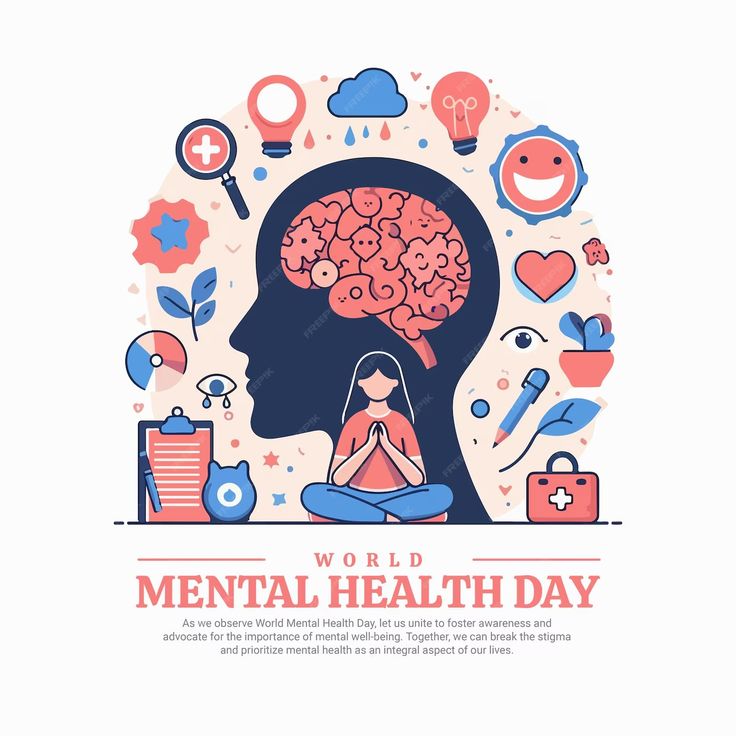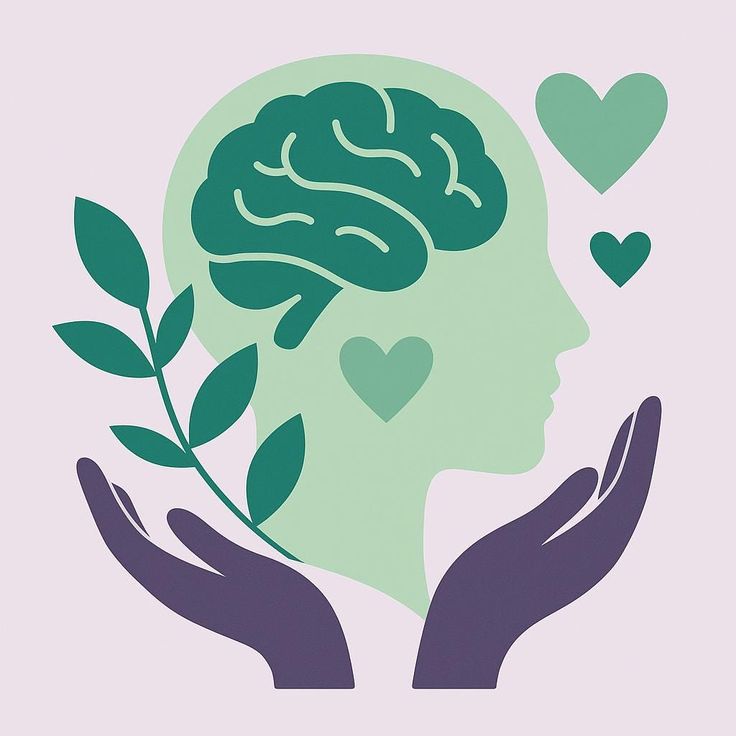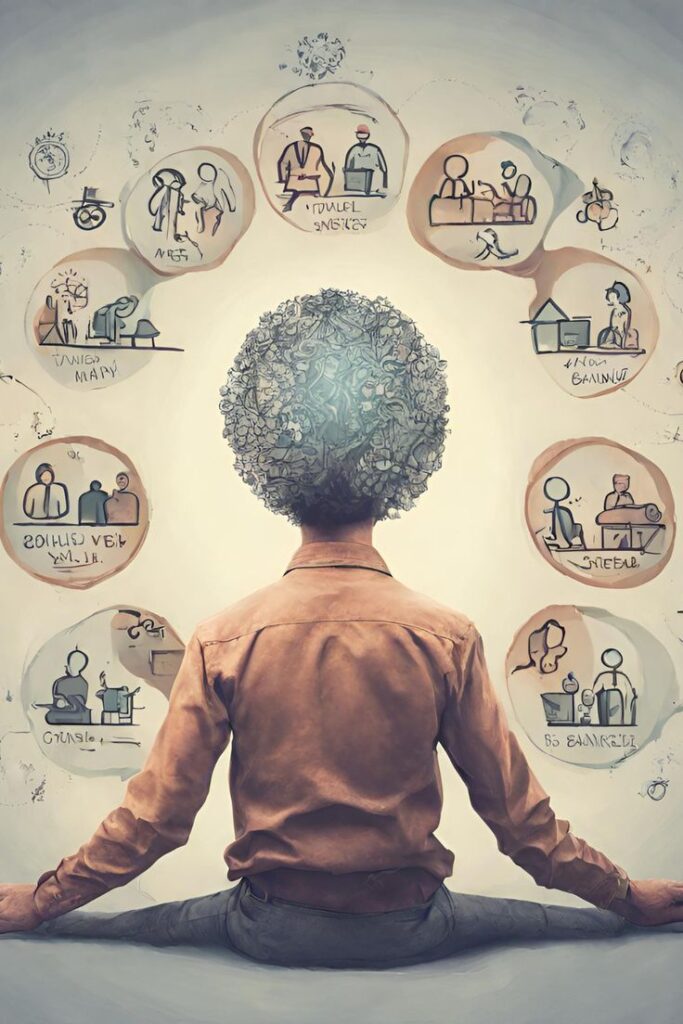Every year, October 10 is marked globally as World Mental Health Day, a moment to raise awareness, reduce stigma, and galvanize action around mental health. This year, the World Federation for Mental Health and partners have placed a spotlight on one of the most urgent and often neglected dimensions of mental health care: “Access to Services – Mental Health in Catastrophes and Emergencies.”
In times of disasters, conflicts, pandemics, and other emergencies, the mind bears wounds as real as those of the body. The 2025 theme emphasizes that mental health must not be seen as a luxury or afterthought, but as an essential component of humanitarian response. The message is clear: Even — and especially — in catastrophe, care must reach the mind.
The Rationale: Why Access in Emergencies Matters
Psychological Impact of Crises
Humanitarian emergencies disrupt the very foundations of individuals’ lives: homes are destroyed, communities are scattered, livelihoods vanish, and the future becomes uncertain. In such circumstances, psychological distress is almost universal. According to the World Health Organization, nearly all people affected by major emergencies experience distress—manifesting as anxiety, grief, sleep disorders, irritability, or fatigue. For many, such reactions heal over time; for a significant minority, they can evolve into diagnosable mental health conditions.
In conflict-affected populations, the data is sobering: an estimated one in five people may suffer from depression, anxiety, post-traumatic stress disorder (PTSD), bipolar disorder, or schizophrenia in the decade following exposure to armed conflict. Underlying vulnerabilities such as poverty, gender inequities, and marginalization further magnify risks.
Disruption of Services — A Double Blow
Emergencies rarely spare the health infrastructure. Hospitals are damaged or repurposed; stock and supply chains collapse; trained mental health professionals may be displaced or overwhelmed. The demand for psychosocial and clinical support can skyrocket, while capacity shrinks.
People with pre-existing severe mental health conditions (e.g. schizophrenia, bipolar disorder) are especially vulnerable: not only is their access to essential medications disrupted, but they often slip further into neglect. Meanwhile, new cases of distress or trauma may not find timely intervention. As a result, there is a growing “treatment gap” that gets wider right when assistance is most needed.
Emergencies as a Turning Point
Yet emergencies also bring opportunity. Aid funding surges, public and political attention sharpens, and the pace of intervention is rapid. If mental health services are integrated into disaster response, the aftermath can leave behind more resilient systems. The WHO notes, for example, how countries like Sri Lanka and the Philippines leveraged disaster-driven momentum to expand district-level mental health services after major crises.
The call from World Mental Health Day 2025 is to harness that opportunity — to embed mental health care into the fabric of emergency response, so that access is not reactive but proactive.
Global Landscape: Access — Hurdles and Progress
Low- and Middle-Income Countries: Strained Systems
In many low- and middle-income countries (LMICs), mental health systems were already fragile before any crisis. Sparse budgets, limited workforce, and low prioritization meant that even in stable times, many people had no access to services. Emergencies magnify these gaps.
For example, in conflict zones across Sub-Saharan Africa, the Middle East, and parts of Asia, mental health care often relies on non-profit organizations or international agencies. Public systems are often under-resourced or interrupted when the conflict intensifies. The coordination between humanitarian actors and local structures is often weak, leading to fragmentation and inefficiency.
High-Income Settings: Crisis, but with Partial Cushion
High-income countries are comparatively better equipped — with larger health budgets, more professionals, and stronger infrastructures — but crisis events still stress systems. Natural disasters, mass displacements, pandemics, and extreme weather events can overload mental health hotlines, outpatient services, and emergency departments.
There is also inequality within countries: underserved or remote communities, migrant or refugee populations, and those in informal settlements can remain invisible even in advanced systems.
Examples of Innovations and Models
NHS England (UK) has recently announced a network of dedicated mental health emergency units — walk-in facilities staffed by specialists, separate from general A&E units — to provide focused crisis support.
In post-disaster settings, psychological first aid, mobile clinics, and community outreach programs have shown success in reaching underserved populations. Integrating mental health into general health services (task-shifting to non-specialists) has been a proven strategy in many LMICs.
During the COVID-19 pandemic, telehealth platforms and digital mental health apps proliferated — offering remote access, albeit with challenges in connectivity and equity.
Voices from the Field: Lessons and Warnings
To understand the stakes, we turn to real stories from the front lines.
In Syrian conflict zones, mental health and psychosocial support (MHPSS) services, once limited to hospitals, have expanded to primary care and community settings despite chronic insecurity. The expansion ensures that people are not forced to travel long distances for care, which is dangerous during conflict.
After the 2004 Indian Ocean tsunami in Sri Lanka, NGOs and governments worked to institutionalize psychosocial support. Over time, the country developed district-level mental health services, transforming an emergency-driven push into a long-term national asset.
In the Philippines post–Typhoon Haiyan (2013), WHO and partners trained more than 1,300 community workers in psychological care across municipalities — effectively building local capacity rather than relying solely on outside specialists.
Yet, despite these successes, many crises still see gaps in inclusion. For example, displaced persons in remote camps, or minority groups lacking lingua-cultural access, often remain outside formal mental health programs.
These cases reflect a broader reality: access is not just about infrastructure, but about equity, coordination, cultural relevance, and sustainability.
The Agenda for Change: What Must Happen
To truly realize the ambition of “access in emergencies,” the agenda must treat mental health as non-negotiable. Below are key pillars to guide action.
1. Preparedness & Integration
Pre-position mental health in disaster planning: Include Mental Health and Psychosocial Support (MHPSS) in hazard assessments, emergency contingency plans, and coordination mechanisms.
Cross-sector integration: Embed mental health into sectors such as shelter, food, education, and water & sanitation — because distress intersects with all aspects of life.
Coordination mechanisms: Set up MHPSS technical working groups early in humanitarian response, linking health, protection, and community actors.
2. Build Workforce & Capacities
Task-shifting and training: Train general health workers, community volunteers, teachers, and frontline responders in psychological first aid and basic supportive care.
Supervision and quality assurance: Even when delegating tasks, ensure supervision by mental health professionals and adherence to evidence-based protocols.
Rapid deployment teams: Maintain standby rosters of mental health experts who can be sent into emergencies early.
3. Infrastructure and Access Channels
Mobile & outreach services: Use mobile clinics, pop-up centers, or satellite services to reach remote or displaced communities.
Telehealth and digital platforms: Where connectivity permits, remote counseling and triage can extend reach; ensure platforms are accessible, private, and safe.
Community networks: Partner with local groups, NGOs, women’s organizations, faith-based bodies — they often already have trust and presence on the ground.
4. Supply Chains, Medicines, and Logistics
Prioritize psychotropic medicines in essential kits: Ensure that medications for severe disorders remain part of the emergency medical supply chain.
Contingency stocks: Pre-stock medicines in strategic hubs so they are accessible even when supply lines break.
5. Inclusion, Equity, and Cultural Sensitivity
Linguistic and cultural adaptation: Tools and services must be tailored to local languages, norms, and interpretations of distress.
Special attention to vulnerable groups: Women, children, elderly, people with disabilities, refugees, minorities — design inclusion strategies.
Stigma reduction: Use community outreach, awareness campaigns, and peer support to reduce barriers to help-seeking.
6. Monitoring, Evaluation and Research
Data systems: Incorporate mental health indicators into humanitarian monitoring to track service coverage, outcomes, and gaps.
Operational research: Invest in context-sensitive evidence to refine models (e.g. which interventions work best in camp settings vs. urban conflict zones).
Feedback loops: Solicit user feedback to ensure services remain responsive and acceptable.
7. Sustain and Build Back Better
Link emergency response to long-term systems: When the emergency phase subsides, transition services into the regular health system to avoid collapse when attention wanes.
Leverage funding windows: Use the influx of humanitarian funds to invest in systemic improvements — workforce, infrastructure, governance.
Advocacy & policy: Push for national mental health policies to require inclusion of MHPSS, donor commitment, and financial sustainability.
Barriers and the Tough Realities
No agenda is straightforward: the path is strewn with challenges.
Funding silos: Humanitarian funding is often short-term and disease-centric, making it difficult to sustain mental health programs beyond the crisis’s acute phase.
Coordination fragmentation: Too many actors, insufficient coordination, duplication, or gaps can weaken impact.
Workforce scarcity: In many settings, even before crises, mental health professionals are very few; expecting them to staff emergency teams is unrealistic.
Security constraints: In conflict zones, access may be physically dangerous, limiting outreach.
Digital divide: Remote methods may exclude those without reliable internet or devices.
Stigma and cultural barriers: In many communities, mental health remains taboo or misunderstood, impairing demand.
Donor fatigue: As crises stretch on, interest wanes, and funding dries just when resilience is needed most.
Recognizing these obstacles is not pessimism — it’s realism. Effective campaigns and reporting must highlight both ambition and friction.
What to Watch for on October 10, 2025
As the world marks this year’s observance, several themes and stories deserve close attention:
1. National Commitments: Will governments launch or renew policies to institutionalize mental health in disaster response plans?
2. Funding Announcements: Are donor agencies pledging new funds for MHPSS in humanitarian contexts?
3. Innovative Pilots: Watch for announcements of new telepsychiatry platforms, mobile mental health units, or novel community-based programs in disaster-prone areas.
4. Voices from Affected Communities: Personal testimonies from displaced persons, refugees, or survivors can humanize the abstract.
5. Accountability and Gaps: Reports that examine which populations remain underserved, and how coordination is evolving.
6. Linking to Broader Crises: Mental health is deeply entwined with climate change, conflict, migration, and pandemics — expect coverage exploring those intersections.
In many countries, civil society groups, mental health NGOs, and international agencies will host local events, webinars, and campaigns to amplify the theme. Participation at community level will be crucial for translating principle into practice.
A Hypothetical Spotlight: “Tara’s Story”
To put a face to the issue, consider a fictional but illustrative case:
Tara, 28, lived in a coastal region hit by a massive cyclone. Her home was destroyed, and her livelihood lost. She witnessed the death of neighbors and was separated from family members. In the weeks that followed, she began having nightmares, flashbacks, insomnia, and panic attacks. She tried to seek help but found her local health clinic destroyed; the nearest functional center was 50 kilometers away. For weeks she remained isolated, her distress worsening.
Now imagine that in the aftermath, a mobile mental health unit arrives in her area, led by a trained psychosocial team. They offer psychological first aid, screen for PTSD and depression, and refer severe cases to telepsychiatric support. A community worker visits her home, helps her link with peer support groups, and gradually she begins to rebuild. Over time, the program transitions into her region’s public health service, ensuring continuity even after the emergency funding ends.
Tara’s journey underscores the stakes: without access, distress becomes disorder, suffering persists, and recovery stalls. With access, there is hope, dignity, and the possibility of long-term resilience.
Related News: Read More





